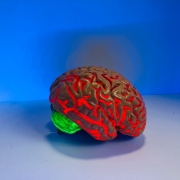Synthetic cathinones
One of the predominant structural groups of NPS are synthetic cathinones. These are β-keto phenethylamines, that have similarities to amphetamine, methamphetamine and MDMA in structure and mechanism of action.
Aside from cathinone, methcathinone, and pyrovalerone, which were placed under international control prior to 2000, eight synthetic cathinones (3,4-methylenedioxypyrovalerone (3,4-MDPV), 4-methylethcathinone (4-MEC), alpha-pyrrolidinovalerophenone (α-PVP), ephylone, ethylone, mephedrone, methylone and pentedrone) have been placed under international control between 2015 and 2019.
Synthetic cathinones are normally present as white or off-white powders although they can come in a range of colours. Mephedrone, for example, commonly appears as white or yellow powder/crystals, with a distinct odour described as ranging from fishy to vanilla or bleach. Although primarily encountered as a powder, mephedrone has also been known to take the form of capsules/tablets, of varying design.
Use and abuse
Synthetic cathinones are commonly taken by insufflation (snorting) or orally, although in recent years, the injection of synthetic cathinones has also been reported. Insufflation doses typically range from 20 to 80 mg, although it can be as low as 5 mg or as high as 125 mg in some cases, with peak effects experienced in less than 30 minutes. The peak effects of mephedrone, which requires a high dose when insufflated, have been reported to occur within 45 minutes to 2 hours after ingestion and effects are reported to last for up to 2 to 3 hours. Users of NPS may often perceive them as safe and find them more attractive than traditional drugs of abuse. However, the toxicity and health implications associated with these products are largely unknown. Moreover, the descriptions on the package of these products regarding the constituents are often inaccurate and misleading. Identical packages have often been found to contain different psychoactive substances, thereby adding to the unpredictability of the effects of these products. A number of studies have demonstrated that these products may contain substances under international control and that the psychoactive constituents in the products are not consistent over time.
Pharmacology and toxicology
Some synthetic cathinones are structurally similar to the amphetamine-type stimulants amphetamine, methamphetamine and MDMA and are reported to have similar central nervous system (CNS) stimulant properties. They can have a pronounced effect on the levels and action of neurotransmitters such as serotonin, dopamine and norepinephrine. Many cathinone derivatives have a single chiral centre and thus exist in two enantiomeric forms with differing potencies. For example, the (S)-enantiomers of cathinone and methcathinone have been reported as being more potent than the (R)-enantiomers.
Synthetic cathinones produce a variety of behavioural effects, and can affect locomotor activity, thermoregulation, learning and memory. Short-term adverse effects reported following mephedrone use are variable and may include loss of appetite, blurred vision, anxiety, post-use depression, confusion, hallucinations, short-term psychosis and mania. Similarly, clinical reports have noted that 3,4-MDPV use can result in anxiety, paranoia, memory loss and aggression. Individuals intoxicated with ephylone displayed a variety of symptoms including palpitations, tachycardia, agitation, aggression, hallucinations, coma and, in some cases, death.
Intoxication by synthetic cathinones may also lead to severe adverse effects including acute liver failure, acute kidney injury, high blood pressure and tremor. A number of synthetic cathinone users have also reported the development of tolerance, dependence or withdrawal symptoms with prolonged use.
Source: Recommended Methods for the Identification and Analysis of Synthetic Cathinones in Seized Materials.









Leave a Reply
Want to join the discussion?Feel free to contribute!